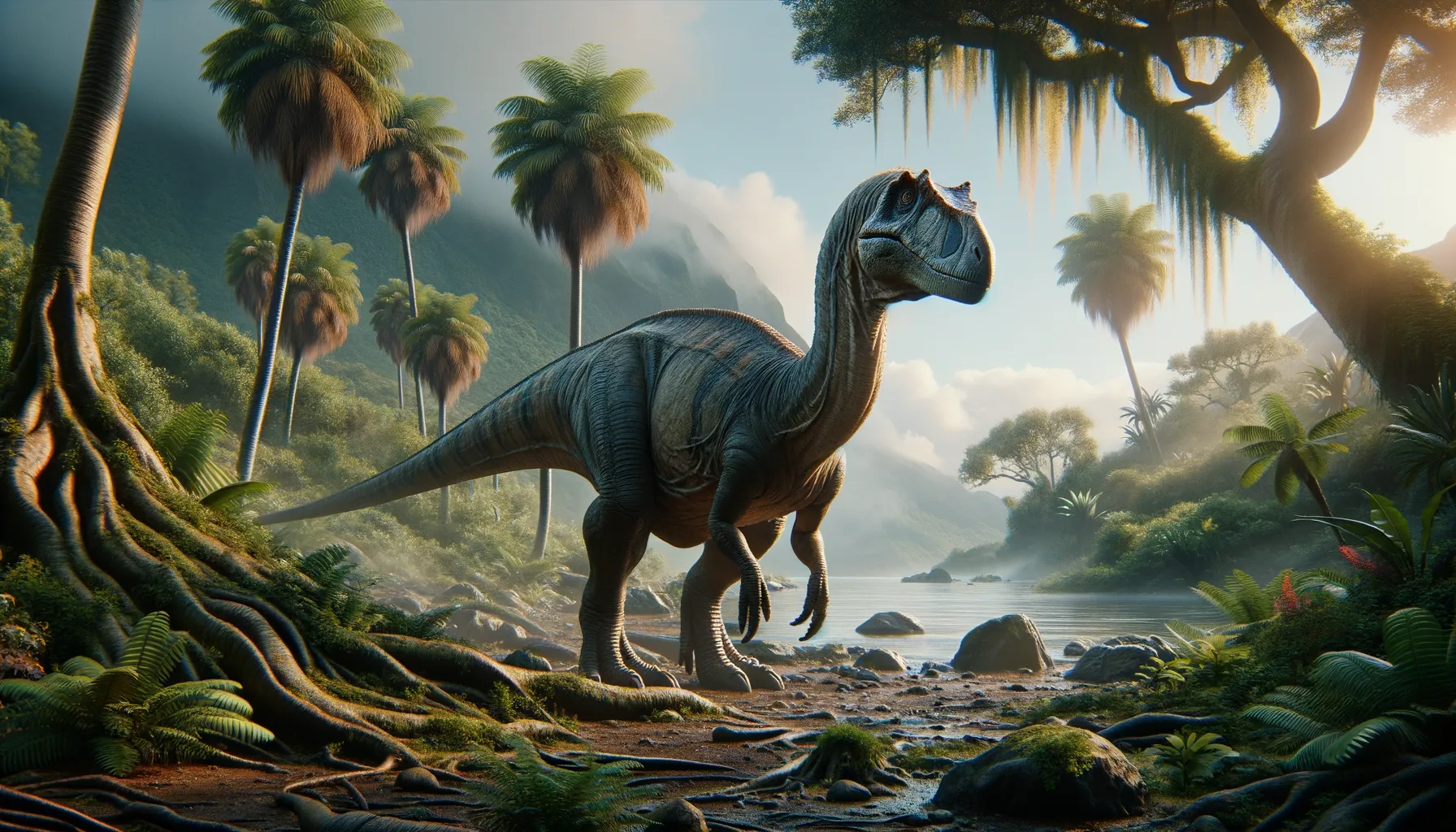
Pararhabdodon
Discover the gentle giant of Cretaceous Spain!
Period
Cretaceous
Length
Up to 26 feet long.
Height
Around 10 feet tall at the hips.
Weight
Approximately 3 to 4 tons.
Pararhabdodon was a large herbivorous dinosaur from the Late Cretaceous period, primarily found in what is now Spain. It belonged to the hadrosaur family, known for their duck-billed appearances. This dinosaur roamed the Earth alongside other famous dinosaurs, living in lush environments with abundant vegetation. Paleontologists have used fossil records to piece together its lifestyle and ecology, offering insights into the dynamic ecosystems of its time.
Diet
Pararhabdodon was a herbivore primarily feeding on plants. It likely ate a variety of ferns, leaves, and other vegetation. Its teeth were adapted to grind tough plant matter.
Hunting
As a herbivore, Pararhabdodon did not hunt. It would have foraged for its meals, moving through diverse plant environments. Its survival depended on finding abundant and varied plant sources.
Environmental challenges
During its time, Pararhabdodon faced changing climates and land shifts. Fluctuations in sea levels affected its habitat, challenging its resource availability. Predation by larger theropods was another threat requiring constant vigilance in open landscapes. Volcanic activity and other natural events may have also played a role in altering its living environment.
Speed
Moderate speed, likely walked on four legs.
Lifespan
Estimated to live around 20 to 30 years.
First discovery
Discovered in Spain in 1993 by paleontologists.
Fun Facts
- Pararhabdodon was a herbivorous dinosaur that lived during the Late Cretaceous period around 70 million years ago.
- It belonged to the hadrosaur family, commonly known as duck-billed dinosaurs due to their distinctively shaped snouts.
- Pararhabdodon fossils have been found in what is now Spain, making it one of the few dinosaurs discovered on the Iberian Peninsula.
- This dinosaur likely had a powerful bite thanks to its hundreds of teeth, adapted for grinding plants.
- Pararhabdodon was around 6 meters long, about the size of a small school bus.
- It likely lived in herds, which would have helped protect it from predators like abelisaurs.
- Pararhabdodon is interesting to paleontologists because it provides insights into the dinosaur populations in Europe during the Cretaceous.
Growth and Development
Pararhabdodon experienced rapid growth during its early years. Fossils suggest it reached maturity by around 10 years of age. Understanding their bone structure helps paleontologists estimate growth rates and developmental stages.
Habitat
Pararhabdodon thrived in floodplains and forests of Late Cretaceous Europe. Its habitat was characterized by lush vegetation and a warm climate. The region supported a rich diversity of flora and fauna, providing ample food sources.
Interaction with other species
Pararhabdodon likely coexisted with other dinosaur species, both herbivores and predators. It may have formed herds for protection against predators. Its presence influenced the ecological dynamics of its environment.
Natural lifespan
Pararhabdodon likely lived up to 30 years in the wild.
Reproduction
Pararhabdodon, like other hadrosaurs, likely laid eggs. Nesting sites were important for reproduction, providing a safe space for young. Fossil evidence suggests they cared for their offspring, possibly forming protective groups.
Social behaviour
Pararhabdodon might have lived in social groups or herds. These herds provided safety in numbers against predators. Communication within the group could have been crucial for survival.
Fossil locations
Fossils of Pararhabdodon have been found primarily in the Iberian Peninsula, particularly Catalonia. Their discovery in Spain provides key insights into European dinosaur ecosystems. Ongoing excavations have helped build a clearer picture of its range.
